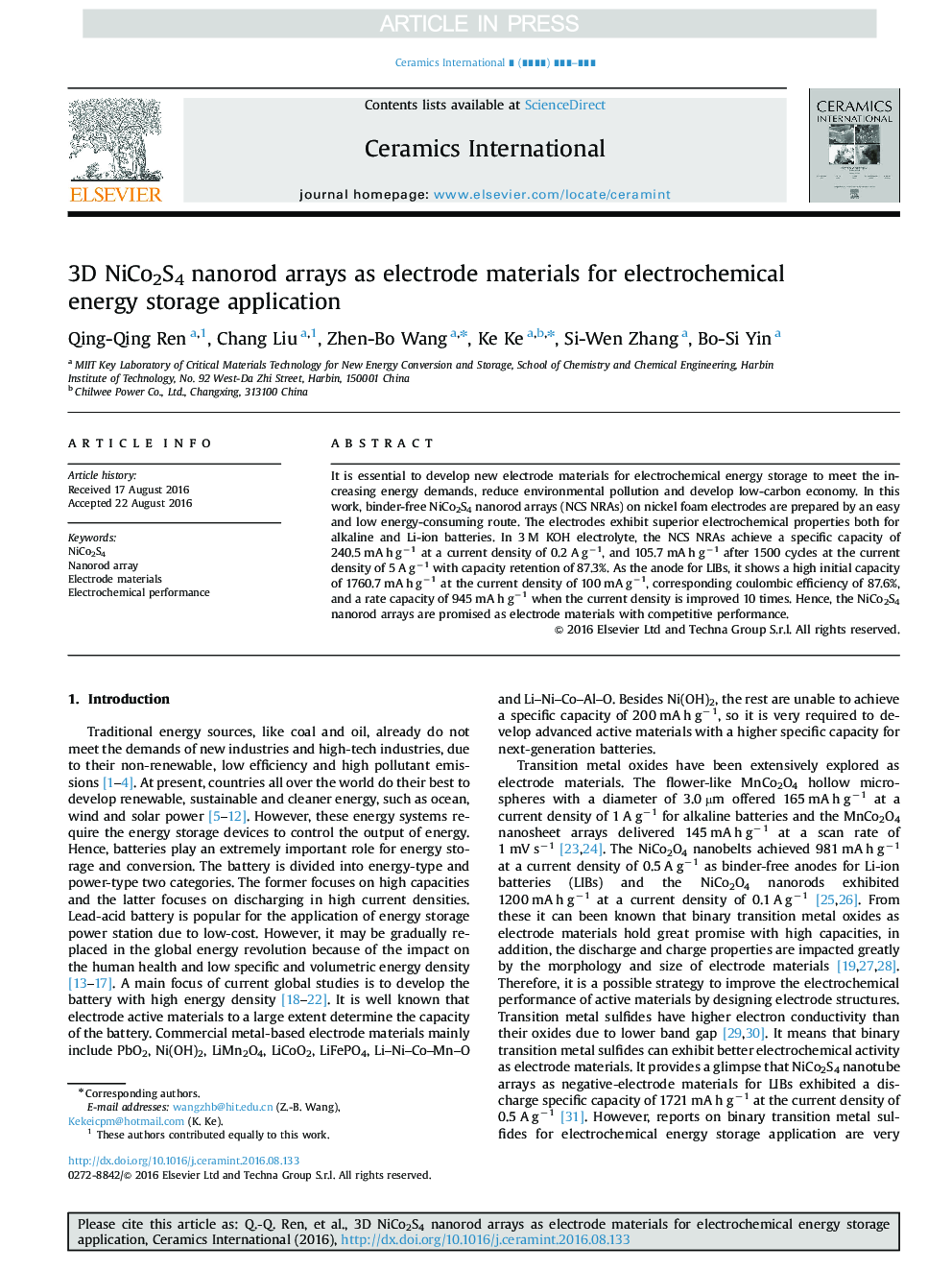| Article ID | Journal | Published Year | Pages | File Type |
|---|---|---|---|---|
| 5439283 | Ceramics International | 2016 | 8 Pages |
Abstract
It is essential to develop new electrode materials for electrochemical energy storage to meet the increasing energy demands, reduce environmental pollution and develop low-carbon economy. In this work, binder-free NiCo2S4 nanorod arrays (NCS NRAs) on nickel foam electrodes are prepared by an easy and low energy-consuming route. The electrodes exhibit superior electrochemical properties both for alkaline and Li-ion batteries. In 3 M KOH electrolyte, the NCS NRAs achieve a specific capacity of 240.5 mA h gâ1 at a current density of 0.2 A gâ1, and 105.7 mA h gâ1 after 1500 cycles at the current density of 5 A gâ1 with capacity retention of 87.3%. As the anode for LIBs, it shows a high initial capacity of 1760.7 mA h gâ1 at the current density of 100 mA gâ1, corresponding coulombic efficiency of 87.6%, and a rate capacity of 945 mA h gâ1 when the current density is improved 10 times. Hence, the NiCo2S4 nanorod arrays are promised as electrode materials with competitive performance.
Related Topics
Physical Sciences and Engineering
Materials Science
Ceramics and Composites
Authors
Qing-Qing Ren, Chang Liu, Zhen-Bo Wang, Ke Ke, Si-Wen Zhang, Bo-Si Yin,
